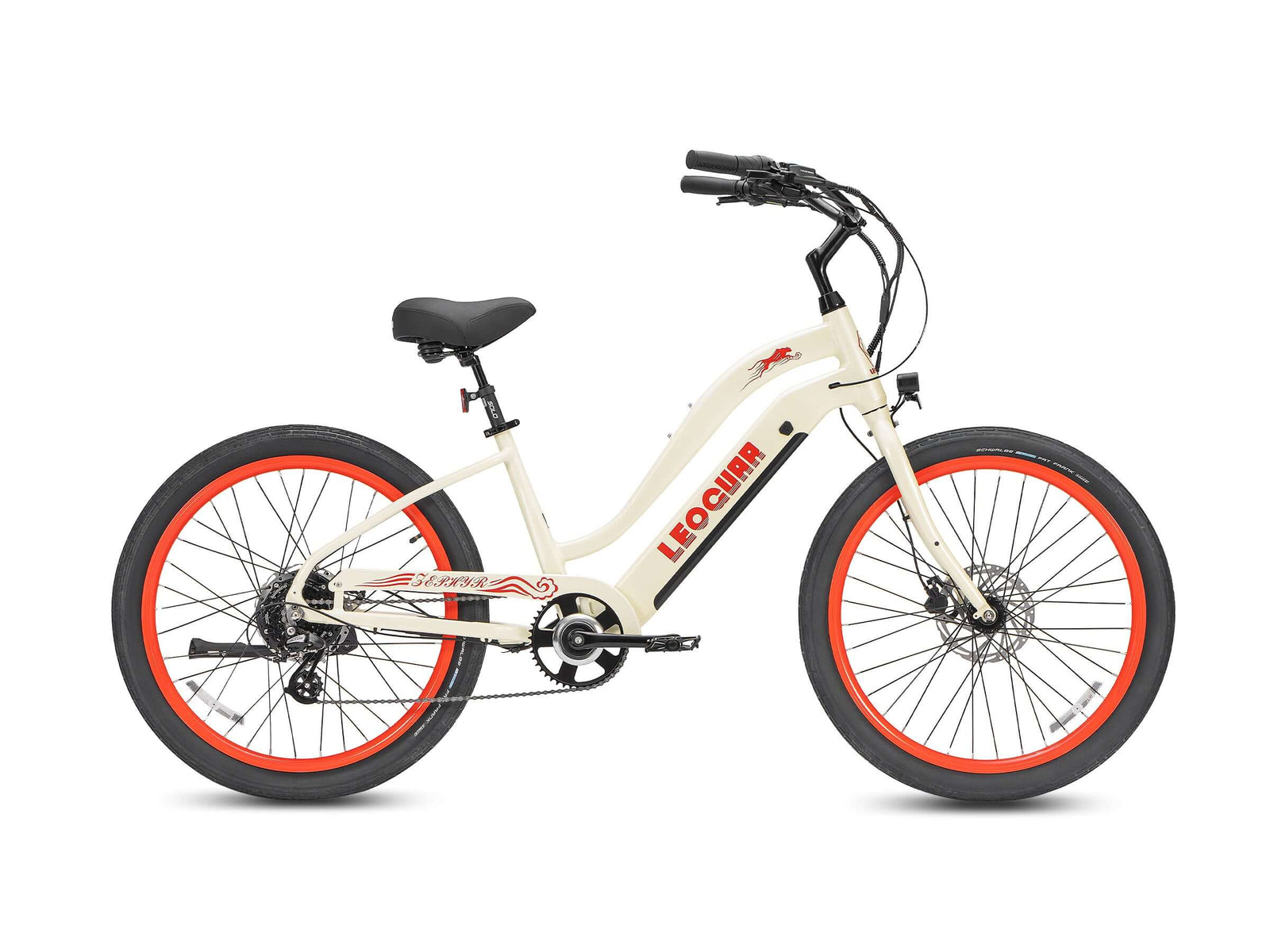
How Hub Motors Work: A Look Inside the Technology
Introduction – Setting the Stage
Hub motors power many electric bikes. They sit in the wheel hub and turn electrical energy into motion using electromagnetic induction, which makes them a smart and simple choice for city rides and leisure trips. They are easy to care for. They use a brushless DC motor placed directly inside the hub, so there is no need for extra gears or chains, and this simplicity gives riders a smooth ride with fewer parts to break.
They work fast. Hub motors convert power straight to movement, avoiding the extra wear of drive chains and gears, which helps the bike last longer and perform better. They are built clear. In this article, we explain how hub motors work, look at how their parts fit together, and share the benefits and limits of using them.
They are very useful. We discuss each part of the motor, review the electromagnetic basics, compare direct drive to geared systems, and even include performance tests and real rider stories. They keep getting smarter. We also share simple tips for upkeep and give a glimpse into future features like smart controls and new materials. They matter a lot. By clearing up myths, using data, and sharing expert tips, the next sections help you understand why hub motors are key in today’s electric bikes and how they will improve over time.
What Is a Hub Motor? – Definition & Basic Concepts
A hub motor sits inside a bike’s wheel. It is built into the hub of either the front or rear wheel and sends power directly to the tire. It is simple. This design removes the need for chains or belts and is loved by casual riders as well as those who like smart tech.
It works clearly. Most hub motors are brushless DC motors. In these motors, the stator stays still with its set of coils, and the rotor, which holds strong magnets, spins around it in a smooth cycle. It is clear to learn. The rotor spins while the stator coils come alive, and an electronic controller gives the right timing for power delivery.
It is different. Unlike mid-drive systems that send force via the chain or gears, hub motors push power right to the wheel, which makes them easier to install and maintain. It is well documented. For a deeper look, see the “Wheel hub motor – Wikipedia” page that covers old designs and technical facts.
The Inner Workings of a Hub Motor
Hub motors have simple parts that work together. They use the force of magnetism to turn electrical energy into movement with few extra parts. The motor has small parts that work as a team. The stator holds copper coils that make a magnetic field when current flows through them.
They are small. The rotor carries permanent magnets and turns when it meets the stator’s magnetic force, which creates motion for the wheel. They work together. An electronic controller sends power from the battery, switching currents in the coils with the help of sensors like Hall sensors.
They share the job. High-quality wires and strong connectors add to the performance by stopping energy losses and keeping the motor safe from bad weather. They differ by type. Direct drive motors move directly while geared motors use a small gear system to boost torque when needed, and each design suits different riding needs.
Electromagnetic Principles in Action
It starts with magnetism. When electricity flows through the copper coils, it makes a magnetic field that touches the rotor’s magnets, causing the rotor to spin fast. It works quietly. Brushless motors reduce friction because they do not have brushes grinding against parts, so they last longer and do not need much upkeep.
It is clear. The motor works as follows:
• Step 1: The battery sends power to the controller.
• Step 2: The controller sends quick power pulses to the stator coils.
• Step 3: The stator’s magnetic fields meet the rotor’s magnets.
• Step 4: The rotor spins and turns the wheel with good force.
It stays efficient. This design lowers noise and helps the motor keep working well under different speeds and loads. It advances fast. New cooling methods and smart control software now keep the motor cool and working well, even when the bike is used for a long time.
Types of Hub Motors in E-Bikes – Direct Drive vs. Geared
Hub motors come in two main styles. One is direct drive and the other is geared, and each type serves different bike riders.
Direct Drive Hub Motors
They move smoothly. These motors have no gears between the motor and wheel and make very little noise. They run clear. Their design is simple, which means there are fewer parts to fix and they perform very well at high speeds without extra wear. They work quietly. However, they usually give lower torque when starting from a stop, but they are prized for a balanced, low-maintenance ride.
Geared Hub Motors
They boost power. These motors use a planetary gearbox that lowers the output speed but adds strong torque for hills and quick starts. They work smartly. Their gear system helps the motor deliver extra power when you need it most, like getting off the line or climbing steep paths.
They make some noise. However, extra moving parts can lead to more care needed and can create a bit of extra noise compared to direct drive motors.
| Feature | Direct Drive Hub Motors | Geared Hub Motors |
| Design Complexity | Simple, gearless design | Has planetary gears |
| Operational Noise | Very quiet | A bit louder due to gears |
| Torque Characteristics | Lower torque at low speeds | Higher torque when starting |
| Maintenance | Less work needed | Needs more care now and then |
| Use Case Scenarios | Smooth rides at high speeds | Best for city rides and hills |
This table shows the key differences. It helps riders choose the right motor based on their needs and the places where they ride.
Advantages and Limitations of Hub Motors in E-Bikes
They are simple. Hub motors make bike design easier by fitting neatly into the wheel hub, which speeds up making or converting bikes. They are helpful. Their simple design cuts down costs and lowers many parts that could break, which keeps repair bills low.
They work great. Yet, under hard use like long climbs, these motors can heat up and slow down or even damage themselves if they get too hot. They have a drawback. Rear hub motors add extra weight to the bike’s wheel, which can make handling tricky on bumpy or tight turns. They perform well. Even with these issues, hub motors remain popular due to their low cost, ease of use, and steady performance in city settings.
Unique In-Depth Analysis & Case Studies
Detailed Performance Analysis
They are efficient. Hub motors show high energy efficiency and low noise, which helps in everyday riding. They work strongly. Lab and field tests show that a well-made hub motor keeps its torque close to even when used for many miles, with only small variations in power.
They run well. Geared motors give a strong push low and direct drive motors keep a high efficiency on flat roads, offering distinct benefits to each design. They are smart. Recent tests prove that better cooling and smart algorithms keep the motor cool and running well, even in long, tough rides.
Real-World Case Studies
They are proven. City bikes with direct drive hub motors run silently and smoothly even in busy traffic. They work in real life. Tests on models with geared hub motors show that riders get extra torque for climbing hills on busy urban roads, with over 10,000 kilometers traveled in tests.
They are reliable. One case study noted that using smart sensors in hub motors cut down upkeep problems by almost 20%, as real-time checks helped fix issues early. They impress many. These studies show that, while hub motors have some limits, their steady performance and efficiency make them a top choice for electric bikes.
Troubleshooting & Maintenance Tips
They are easy to check. Regular checks help spot issues like overheating or sensor faults early on. They help you ride longer. First, inspect the wires and connectors to be sure everything is tight and free of rust.
They work clearly. Next, use a simple multimeter to test sensors like Hall sensors to make sure they send the right signals. They keep things safe. If you spot overheating, check the cooling fins and clear away any debris blocking the airflow.
They are smart habits. Clean the motor housing with a soft brush and a damp cloth and oil the bearings as the manufacturer suggests to keep the motor smooth. They simplify care. A quick checklist covers cable checks, sensor tests, and cleaning tasks, which stops small issues from becoming big problems.
Future Trends and Innovations in Hub Motor Technology
They are evolving. New materials make hub motors lighter and stronger without losing power, and this helps reduce overall weight. They advance fast. Innovations in sensor and control systems now allow real-time tweaks to power use, ensuring the motor stays cool and runs efficiently.
They grow smart. Integration with wireless systems and phone apps will let riders set up their bikes for a ride tailored to them. They move forward. New magnetic and cooling technologies are set to fix current issues and boost power even when the load gets high. They lead change. These advances promise a brighter future for hub motors by cutting energy use and making electric bikes even more practical.
Conclusion – Summarizing Key Insights & Final Thoughts
They cause change. Hub motor technology turns electrical power into smooth motion using a direct, compact design. They are clear. This article explained the key parts, the basic principles, the benefits, and the care needed for hub motors.
They serve riders. Hub motors offer a mix of low upkeep, affordability, and a smooth ride while ongoing upgrades boost energy use and smart features. They matter much. Knowing about hub motors helps you choose the right e-bike motor and enjoy both a great ride and long-lasting performance.
FAQ
-
Q: What's the difference between direct drive and geared hub motors?
A: Direct drive motors are quieter and simpler but offer less torque, while geared hub motors provide more power for hills but require more maintenance.
-
Q: How long do hub motors typically last?
A: With proper maintenance, hub motors can last 10,000+ kilometers, especially with modern smart sensors that reduce maintenance issues by 20%.
-
Q: Are hub motors better for city riding or off-road use?
A: Hub motors excel in city environments due to their smooth operation and low maintenance, but may be less suitable for intense off-road use.
-
Q: What's the main advantage of hub motors over other e-bike motors?
A: Hub motors offer simpler installation, lower maintenance, and more affordable pricing compared to mid-drive systems.
-
Q: How often should I maintain my hub motor?
A: Regular inspections are recommended monthly, including checking connections, cleaning debris, and ensuring proper cooling system function.










































Leave a comment